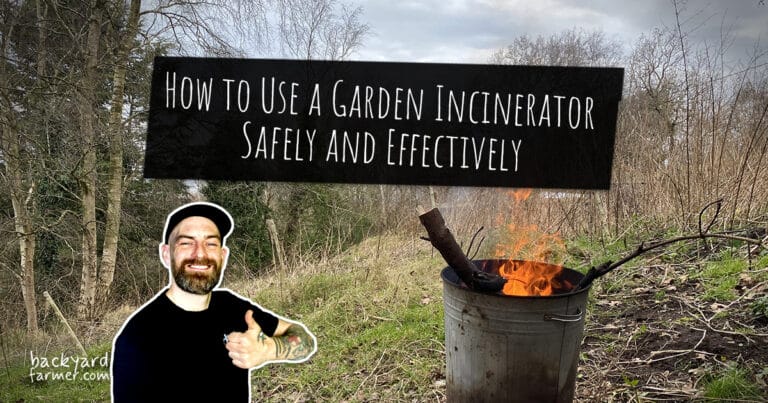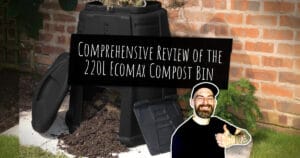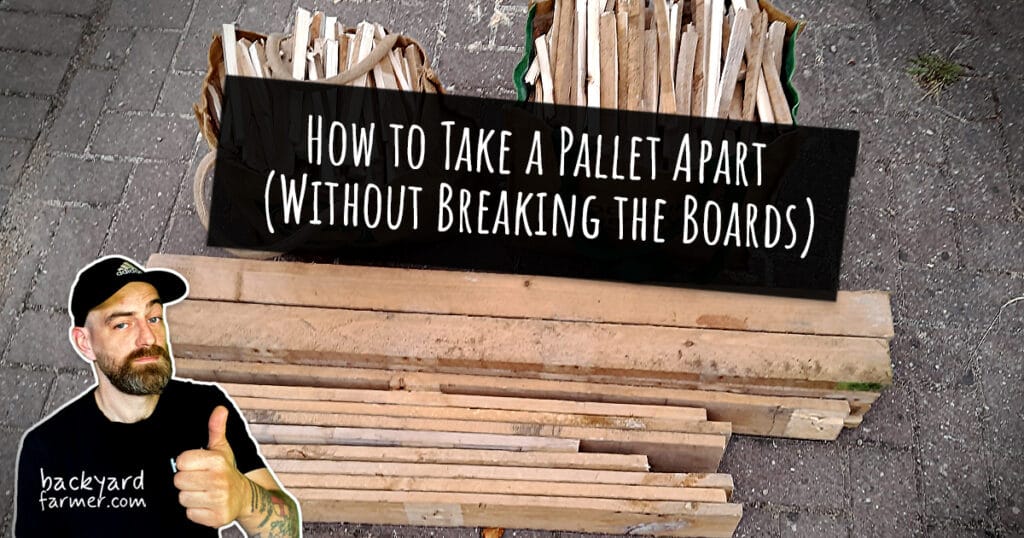Table of contents
- Introduction: How to Use a Garden Incinerator
- What Is a Garden Incinerator?
- Benefits of Using a Garden Incinerator
- How to Use a Garden Incinerator (Step by Step guide with Images)
- Legal and Safety Considerations
- Pro Tips for Effective Garden Incinerator Use
- Garden Incinerator Lid On or Off?
- FAQs About Garden Incinerators
- Conclusion: Efficient and Safe Garden Waste Management
Introduction: How to Use a Garden Incinerator
Why Use a Garden Incinerator? Managing garden waste can be challenging, especially with materials that don’t belong in a compost bin. A garden incinerator offers:
- Efficiency: Quickly disposes of garden debris.
- Eco-friendliness: Produces nutrient-rich ash to enrich your soil.
- Convenience: Simplifies seasonal cleanups and pruning waste disposal.
What You’ll Learn in This Guide
This step-by-step guide will cover:
- Choosing the right garden incinerator.
- Legal and safety tips for hassle-free use.
- Practical tips to maximize efficiency.
- A detailed tutorial (with images) on using a garden incinerator safely.
If you’re looking for a Garden incinerator with a little extra room, check out my review of the Simpa 180L Garden Incinerator here. After a smaller one? Check out my review of the 90L incinerator here.
What Is a Garden Incinerator?
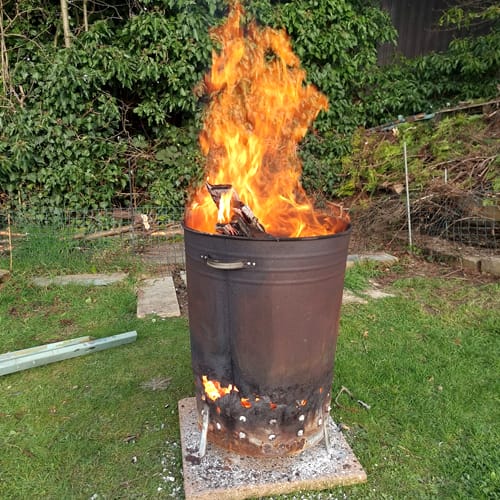
Definition: A garden incinerator is a metal container, often drum-shaped, designed for burning garden waste safely and efficiently. It typically features:
- A ventilated body for proper airflow.
- A lid with a chimney to control smoke.
- Handles for portability and safety.
Common Uses: Garden incinerators are ideal for disposing of:
- Pruned branches and twigs.
- Dead leaves and grass clippings.
- Non-compostable materials, like diseased plants.
- Weeds and invasive plants, preventing them from spreading.
Types of Garden Incinerators: There are several types available, including:
- Metal bins: Durable and widely used.
- Galvanized steel models: Rust-resistant and long-lasting.
- Portable incinerators: Lightweight and easy to move.
- Large-capacity bins: Ideal for bigger gardens.
Benefits: Using a garden incinerator provides several advantages:
- Quick Waste Disposal: Burns debris faster than composting.
- Reduces Landfill Waste: Turns organic material into ash.
- Produces Fertilizer: The resulting ash is rich in potassium and phosphorus.
Benefits of Using a Garden Incinerator
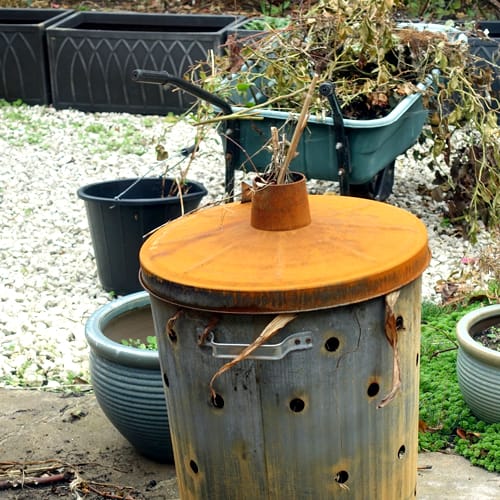
1. Quick and Efficient Waste Disposal
Garden incinerators are a fast way to manage waste, especially for:
- Pruned branches that take years to decompose naturally.
- Weeds and invasive plants that shouldn’t go in the compost bin.
- Seasonal clean-ups, like autumn leaves or post-storm debris.
Instead of waiting for organic material to break down, an incinerator reduces it to ash in minutes.
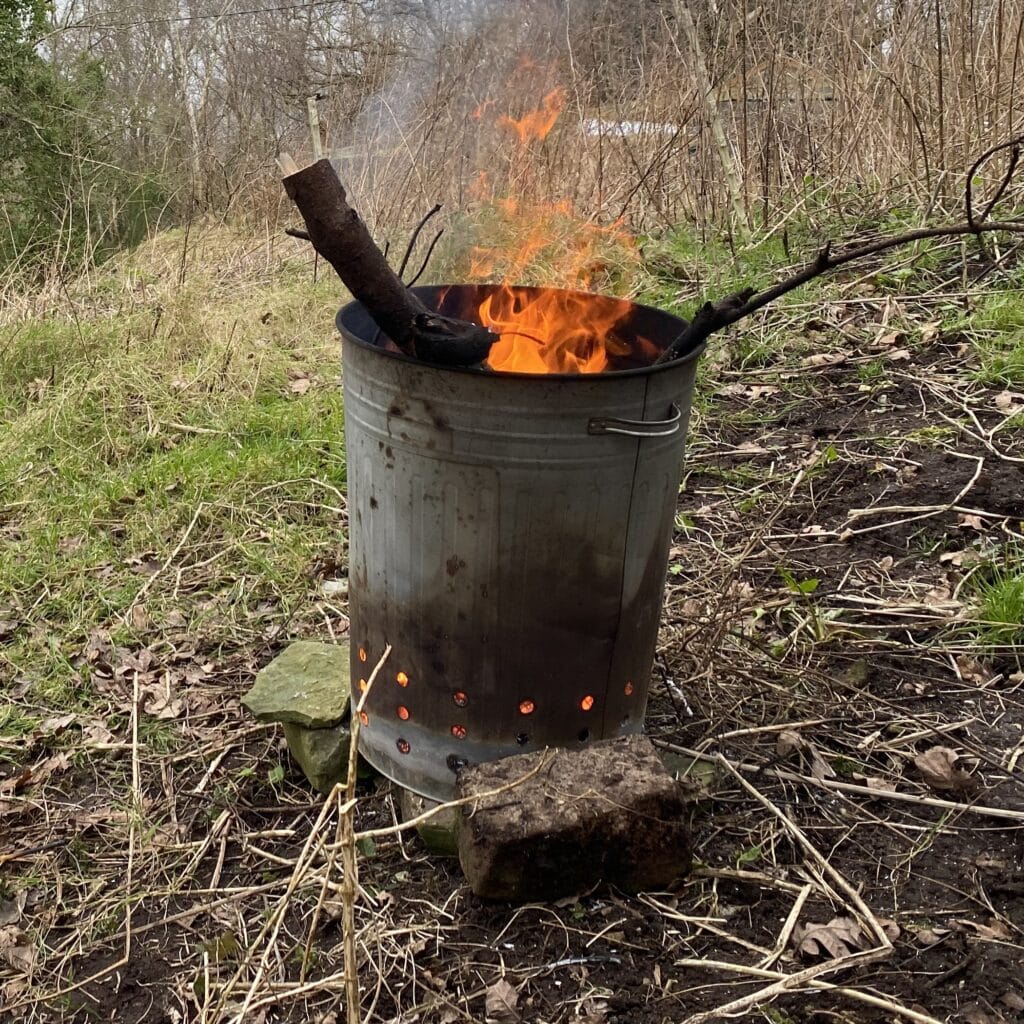
2. Eco-Friendly Waste Management
Using a garden incinerator can help reduce landfill waste:
- Burn materials that are unsuitable for composting, like diseased plants.
- Turn waste into potash-rich ash, which can be used as a natural fertilizer for your garden.
Consider adding composting to your garden waste management routine to complement your incinerator. Check out our guide on How to Kill Weeds Naturally with Salt for eco-friendly weed disposal ideas.
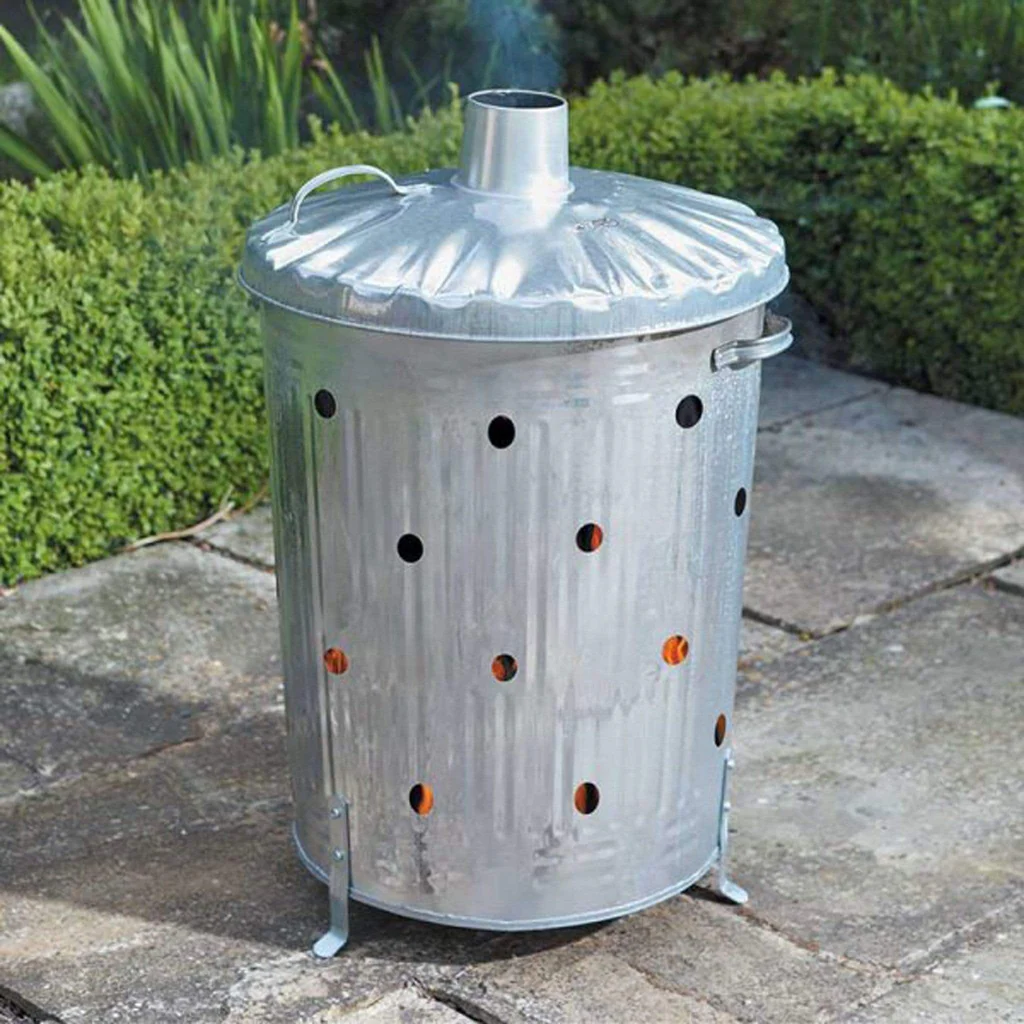
3. Compact and Convenient
Garden incinerators are:
- Portable: Easily moved to different areas of your garden.
- Space-Saving: Ideal for small gardens or urban spaces.
- Low Maintenance: Requires minimal upkeep compared to other waste disposal systems.
Tip: Always prioritize composting when possible and use the incinerator as a complementary tool.
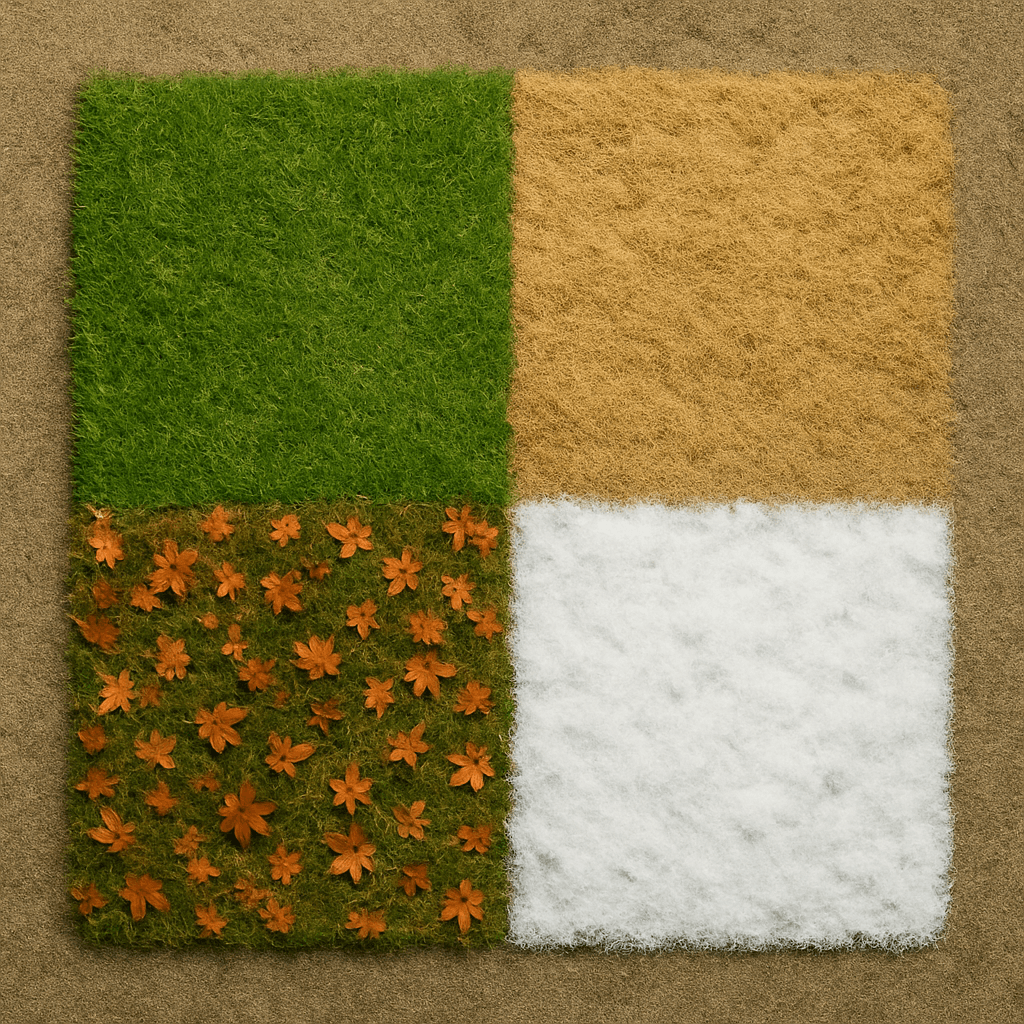
4. Seasonal Versatility
A garden incinerator is useful year-round:
- Spring: Burn leftover winter debris and pruned branches.
- Summer: Dispose of weeds or old vegetable plants.
- Autumn: Clear fallen leaves.
- Winter: Tidy up storm-damaged branches or dead plant material.
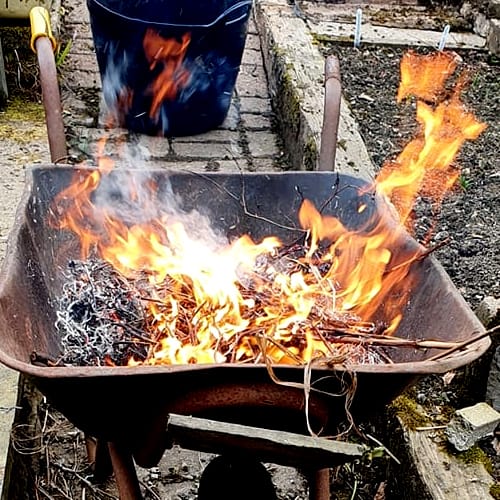
5. Safety and Control
Unlike open bonfires, garden incinerators are designed to:
- Contain flames within the bin, minimizing fire hazards.
- Reduce smoke with proper airflow and a chimney lid.
By keeping the fire contained, they’re safer for both you and the environment.
How to Use a Garden Incinerator (Step by Step guide with Images)
This illustrated step-by-step guide shows you how to use a garden incinerator safely and effectively, from preparation through to safe extinguishing.
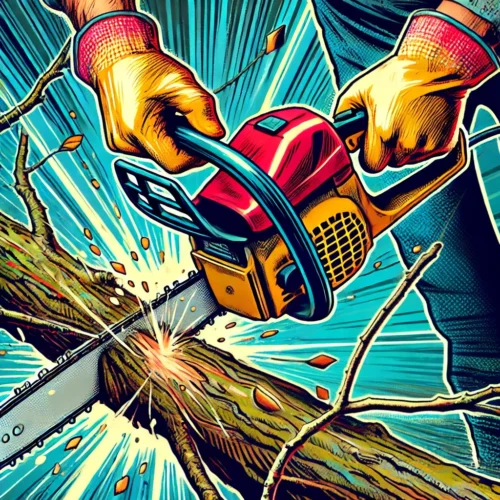
1. Prepare Materials and Safety Gear
Before you start: Avoid overloading at this stage to prevent inefficient burning and excessive smoke.
- Cut garden waste into manageable sizes so it fits easily inside the incinerator.
- Put on protective equipment — fire-resistant gloves, sturdy boots, and long-sleeved natural-fibre clothing are best.

2. Prepare Water Source
Always have a water source nearby — a full watering can, garden hose, or bucket of water. This ensures you can quickly deal with unexpected flare-ups or extinguish the fire safely at the end.
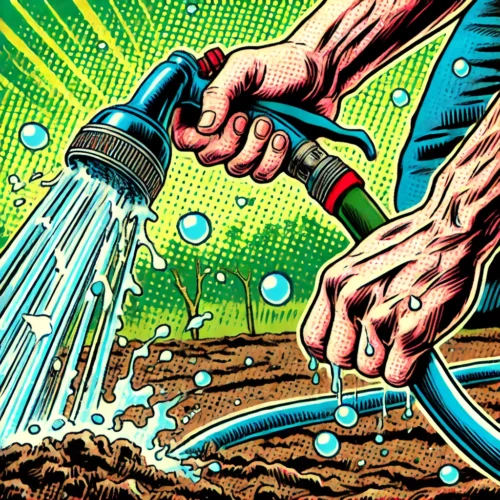
3. Soak the Surrounding Area
To reduce fire risk, thoroughly wet the ground around the incinerator before lighting. This prevents stray sparks from igniting dry grass or leaves.
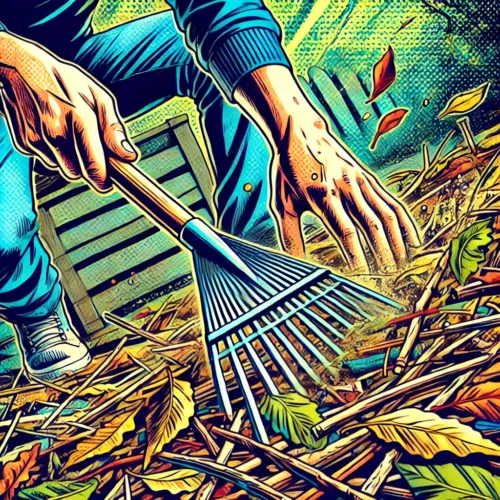
4. Clear the Area and Ensure Stability
- Remove dry leaves, paper, or debris that could catch fire.
- Place the incinerator on flat, solid ground to avoid tipping.
- Once burning, use the air vents to control airflow and keep the fire efficient.
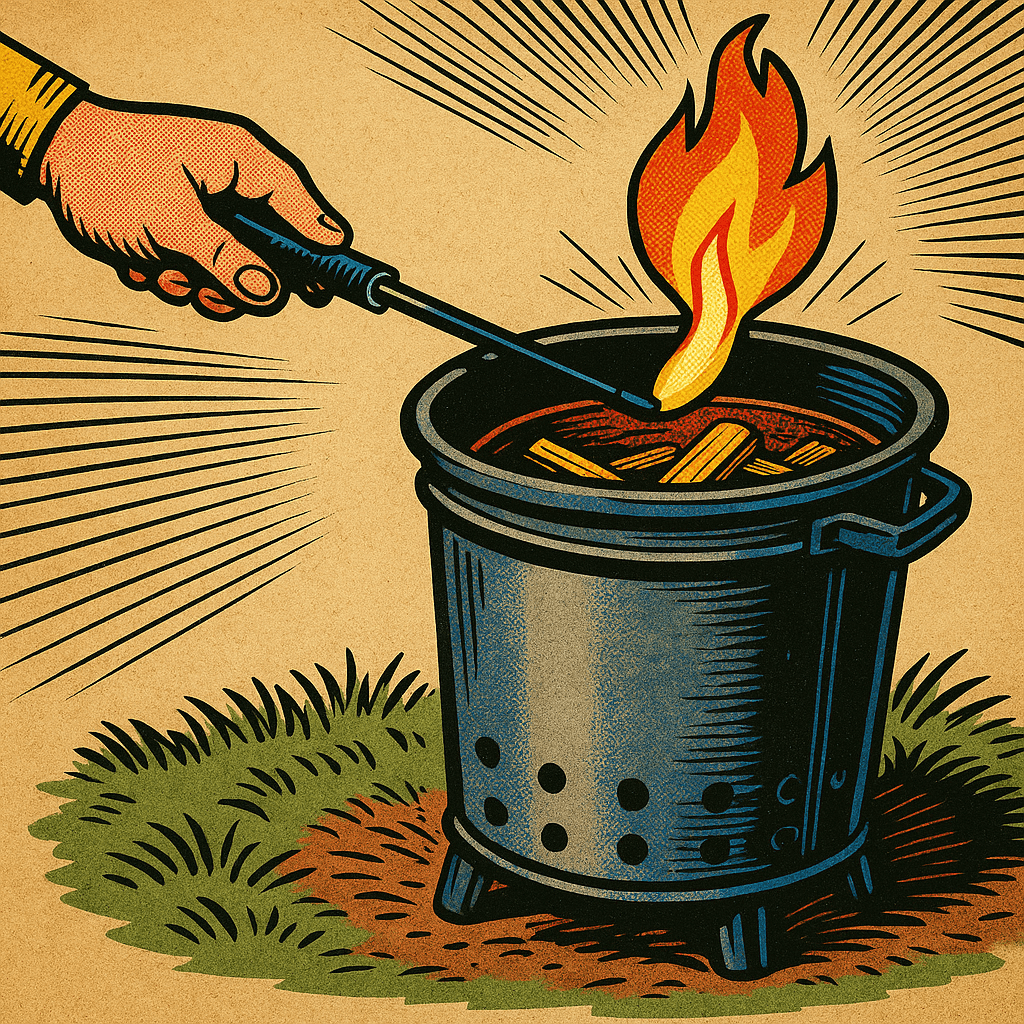
5. Lighting the Incinerator
- Start with a base of paper or dry kindling at the bottom.
- Add small, dry garden waste loosely on top to allow airflow.
- Use long matches or a long-handled lighter for safety.
- Leave the lid off during ignition, then replace it once the fire is established.
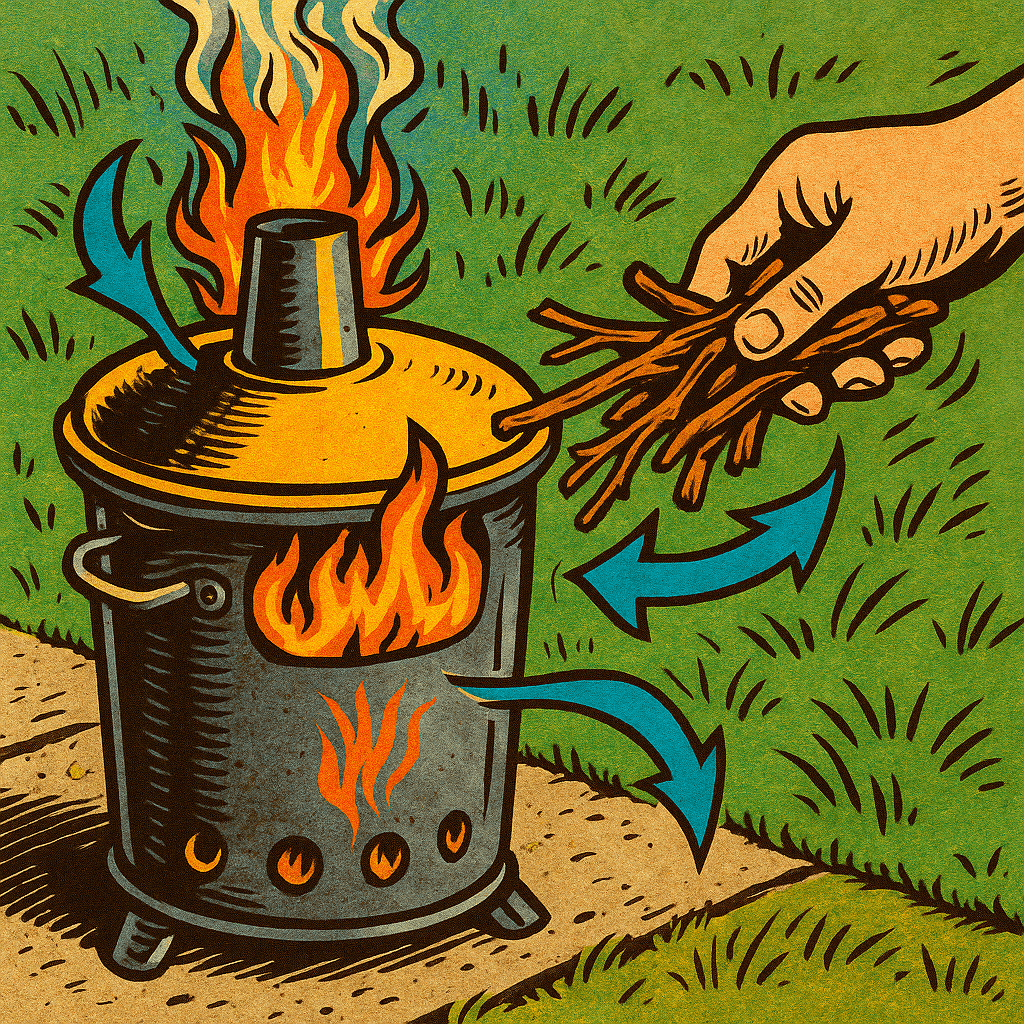
6. Maintaining the Fire
- Add waste gradually to maintain steady heat and avoid overloading, which can smother the fire.
- Keep vents open to promote oxygen flow.
- Replace the lid during burning to retain heat, reduce sparks, and manage smoke.
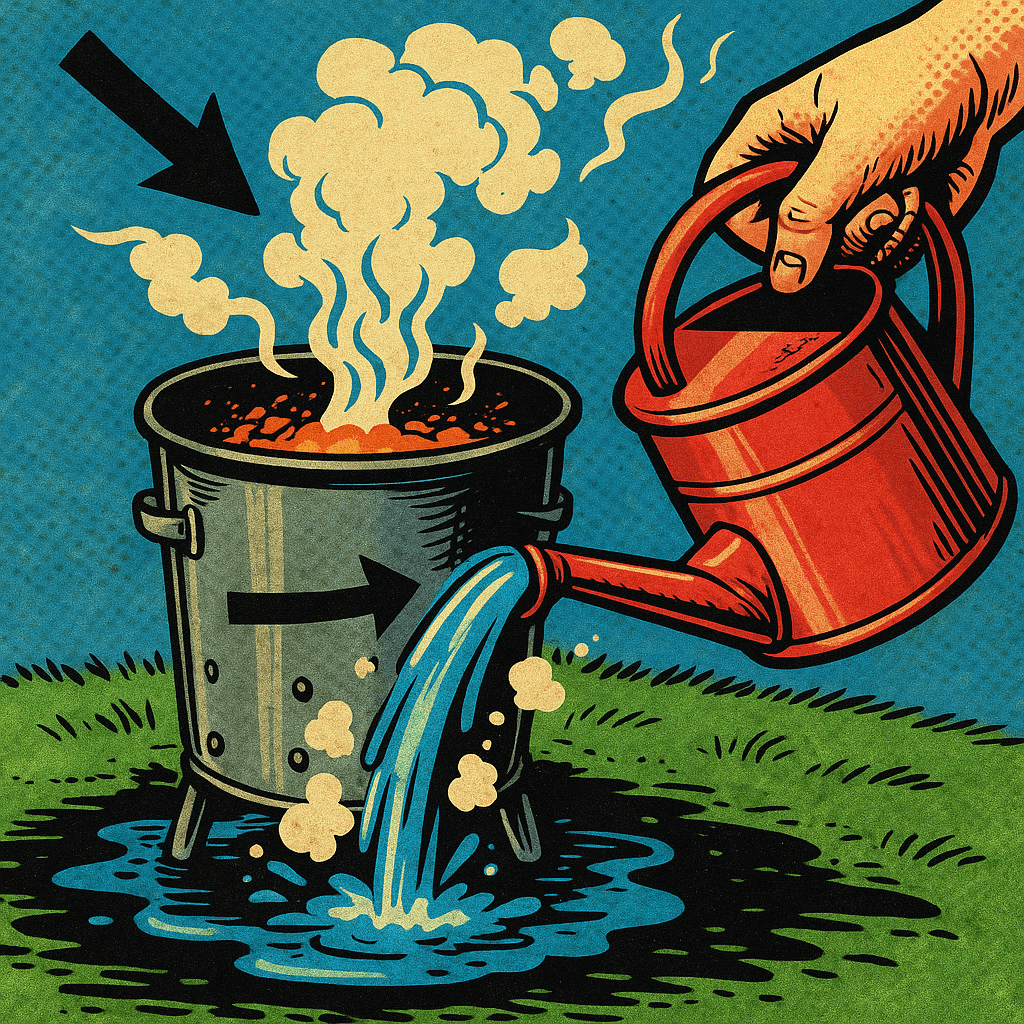
7. Extinguishing the Fire Safely
- Allow the fire to burn down completely if possible.
- Spread out the ashes with a poker to speed up cooling.
- Alternatively, carefully extinguish with water to make the site safe more quickly.
- Always ensure the incinerator and surrounding area are fully cool before leaving unattended.
Pro Tips for Safety
- Avoid using the incinerator on windy days to prevent embers from spreading.
- Always supervise the fire—never leave it unattended.
- Wet the surrounding area if conditions are dry to reduce fire risks.
Burning Garden Waste in the UK – What’s Allowed
When using an incinerator, you must follow local regulations and best practices. In general:
- Allowed: branches, twigs, pruned wood, dry leaves, untreated timber.
- Not Allowed: plastics, painted or treated wood, household rubbish, wet green waste.
Burn responsibly at permitted times, and ensure smoke doesn’t cause a nuisance to neighbours.
👉 For eco-friendly alternatives, see our guide on Composting and Wormery for handling organic waste without burning.
Legal and Safety Considerations
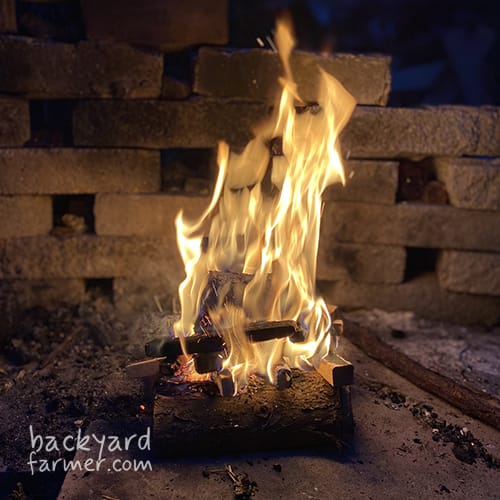
Check Local Regulations
Before using a garden incinerator, research your area’s rules to avoid fines and complaints:
- Council Guidelines: Visit your local council’s website for specific policies on garden incinerators and bonfires.
- Permitted Hours: Some areas have restrictions on when you can burn waste.
- Prohibited Materials: Burning plastics, treated wood, or hazardous materials is often illegal.
Before using your garden incinerator, make sure to review your local council’s guidelines on garden waste disposal. Visit the UK Government’s bonfire and incinerator regulations page for more details.

Safety Gear
Wearing the right protective gear minimizes risks:
- Fire-Resistant Gloves: Protect your hands from burns.
- Sturdy Boots: Ensure stable footing and prevent injury from sharp objects.
- Non-Synthetic Clothing: Wear long sleeves and trousers made from natural fibers to avoid melting or burning.
- Eye protection – Not essential but I always wear saftey glasses when dealing with fire.
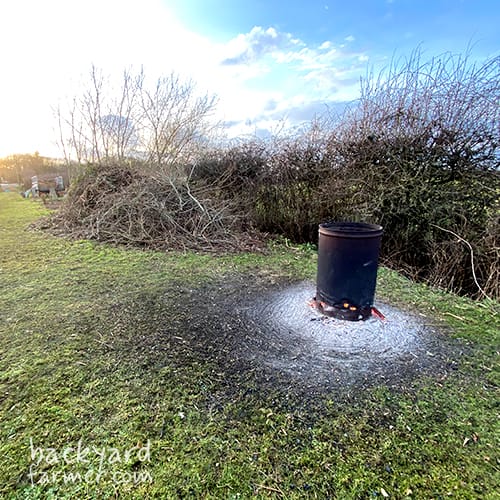
Preparing the Area
Ensure the surrounding area is safe before lighting your incinerator:
- Clear Debris: Remove dry leaves, paper, or flammable materials near the incinerator.
- Flat Surface: Place the incinerator on a stable, fireproof surface like concrete.
- Water Supply: Keep a garden hose or full watering can nearby in case of emergencies.
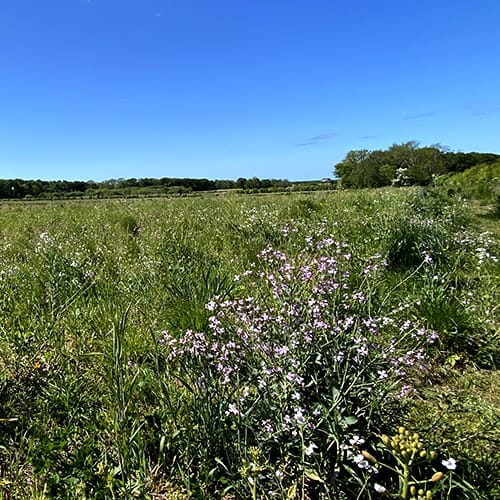
Weather Awareness
Burning at the wrong time can create hazards:
- Avoid Windy Days: Wind can spread embers and increase fire risks.
- Check Humidity Levels: Dry conditions make surrounding vegetation more flammable.
- Ideal Weather: Calm, damp days are best for safe burning.
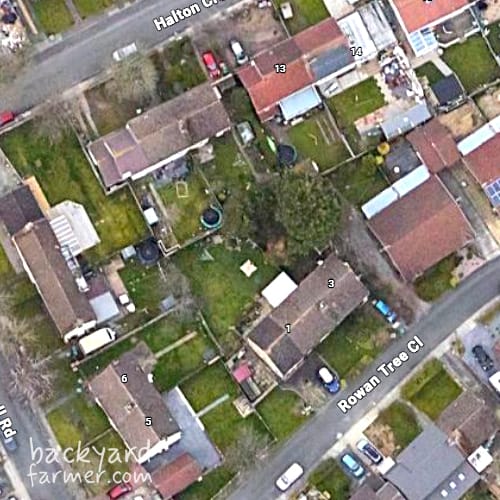
Neighbor Considerations
Using a garden incinerator responsibly helps maintain good relationships:
- Timing: Burn waste when neighbors are less likely to be outside (early mornings or late evenings).
- Smoke Management: Position the incinerator so smoke doesn’t blow directly onto neighboring properties.
- Communication: Let neighbors know beforehand if you plan to burn a large amount of waste.
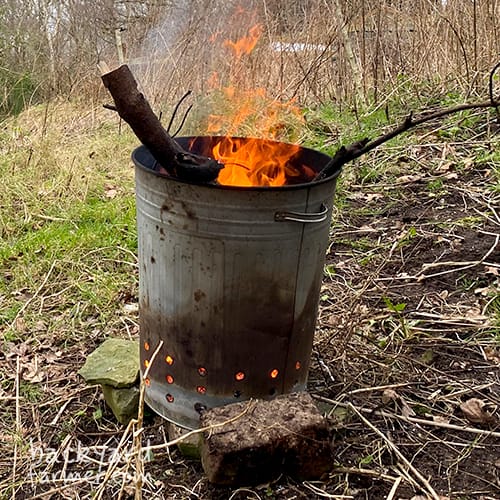
Fire Control
Always be prepared to act quickly in case of an emergency:
- Never Leave Unattended: Stay near the incinerator until the fire is completely extinguished.
- Extinguishing the Fire: Let the fire burn out naturally, then spread the ashes to cool.
- Emergency Equipment: Keep a fire extinguisher, sand, or water handy.
Pro Tip: If you’re unsure about local restrictions or best practices, consider alternative options like composting or council-run garden waste collection services.
Pro Tips for Effective Garden Incinerator Use
1. Maximize Efficiency
- Dry Your Waste: Ensure garden debris is completely dry before burning. Wet waste produces excessive smoke and slows down the process.
- Layer Properly: Start with small, dry materials like kindling or newspaper and gradually add larger waste as the fire builds.
2. Reduce Smoke
- Avoid Green Materials: Burning fresh plant material creates smoke and a smoldering fire.
- Use the Lid: Keep the lid on during burning to control smoke and maintain high temperatures.
- Improve Airflow: Ensure the air vents are open and unobstructed for an efficient burn.
3. Reuse the Ash
Ash from burned garden waste can be a valuable resource:
- Soil Enrichment: Ash is rich in potassium and other minerals. Sprinkle it lightly around plants like tomatoes or roses.
- Pest Control: Use ash as a natural deterrent for slugs and snails.
4. Avoid Overloading
Adding too much waste at once can smother the fire. Instead:
- Add materials gradually to maintain consistent heat.
- Ensure waste doesn’t exceed the rim of the incinerator for safe airflow.
5. Burn Responsibly
- Monitor the Fire: Always keep an eye on the incinerator until the fire has completely burned out.
- Burn During Appropriate Times: Early morning or late evening is best to avoid disturbing neighbors.
- Consider Alternatives: For materials like grass clippings or healthy leaves, composting may be a better option.
6. Regular Maintenance
- Clean the Incinerator: Remove ash and debris after each use to prevent clogging of vents.
- Check for Damage: Inspect for rust or wear and replace damaged parts to ensure safety.
7. Be Weather-Wise
- Avoid burning on windy days to prevent embers from spreading.
- Damp but calm weather is ideal for reducing fire risks and maintaining control.
Pro Tip: Consider using a portable or lightweight incinerator if you need to move it between garden zones, making waste disposal more convenient.
Garden Incinerator Lid On or Off?
One of the most common questions when using a garden incinerator is whether to keep the lid on or off. The answer depends on what you’re burning and the stage of the fire.
Keep the Lid On When:
- You want to retain heat for faster, more complete burning.
- You need to reduce sparks and embers escaping.
- You want to control smoke direction via the chimney.
Take the Lid Off When:
- Starting the fire, to allow plenty of oxygen flow.
- Adding bulky materials that need more space to ignite.
- The fire is struggling due to poor airflow.
Best Practice: Start with the lid off for ignition, then replace it once the fire is established. Adjust as needed for airflow and safety — but never walk away without the lid in place, as it reduces fire risks and smoke spread.
FAQs About Garden Incinerators
To address common questions and boost engagement, include a detailed FAQ section targeting long-tail keywords.
You can burn:
– Dry garden waste (e.g., leaves, twigs, pruned branches).
Untreated wood.
Paper and cardboard (non-glossy).
Avoid burning:
– Plastics, treated wood, or hazardous materials.
Wet or green waste, which creates excessive smoke.
For Soil Enrichment: Ash is rich in potassium and phosphorus—great for flowering plants like roses or fruiting crops like tomatoes.
For Pest Control: Sprinkle around plants to deter slugs and snails.
Disposal: If not needed, dispose of cooled ash in your regular waste bin.
Check local regulations through your council’s website.
Look for guidelines on permitted times, acceptable materials, and weather restrictions.
Ensure you’re not violating smoke control area rules.
Use an Incinerator for: Diseased plants, weeds, and non-compostable materials.
Use a Compost Bin for: Grass clippings, fruit, and vegetable scraps to create nutrient-rich compost.
Both tools complement each other in managing garden waste.
Let the fire burn down naturally.
Spread the ash with a poker to ensure it cools faster.
Keep a watering can or hose nearby to douse embers in case of emergency.
Technically possible, but not recommended due to potential contamination and uneven heat distribution. Stick to designated BBQ equipment.
Burning times vary based on waste type and volume, but most materials burn completely within 1–2 hours.
Durability: Choose galvanized steel models.
Portability: Opt for lightweight or compact bins.
Large gardens: Consider high-capacity incinerators.
Clean out ash and debris after every use.
Check for rust or damage regularly.
Store in a dry place to prevent corrosion.
Paper and cardboard should only be added in small amounts. They burn quickly, so add them gradually alongside other dry waste. Avoid glossy or coated paper. Typically, paper burns away within minutes, but always keep the lid on to prevent sparks.
Yes, you can burn dry branches, twigs, leaves, and weeds. However, avoid compostable material like grass clippings or kitchen scraps — these are better for your compost bin. Always make sure the waste is completely dry, as wet material causes smoke and inefficient burning.
– Use only dry, seasoned materials.
– Keep air vents open for strong airflow.
– Start with paper/kindling and build gradually.
– Use the lid to maintain high temperature and direct smoke upwards.
Conclusion: Efficient and Safe Garden Waste Management
Key Takeaways
Using a garden incinerator is an effective way to manage garden waste while benefiting your garden with nutrient-rich ash. Here’s a recap of what you’ve learned:
- What It Is: A safe, efficient tool for disposing of garden debris.
- Benefits: Quick waste disposal, eco-friendliness, and year-round versatility.
- How to Use It Safely: Follow proper setup, preparation, and fire safety tips.
- Pro Tips: Dry your materials, reduce smoke, and reuse ash for maximum efficiency.
- Legal and Safety Considerations: Check local regulations and always prioritize safety.
